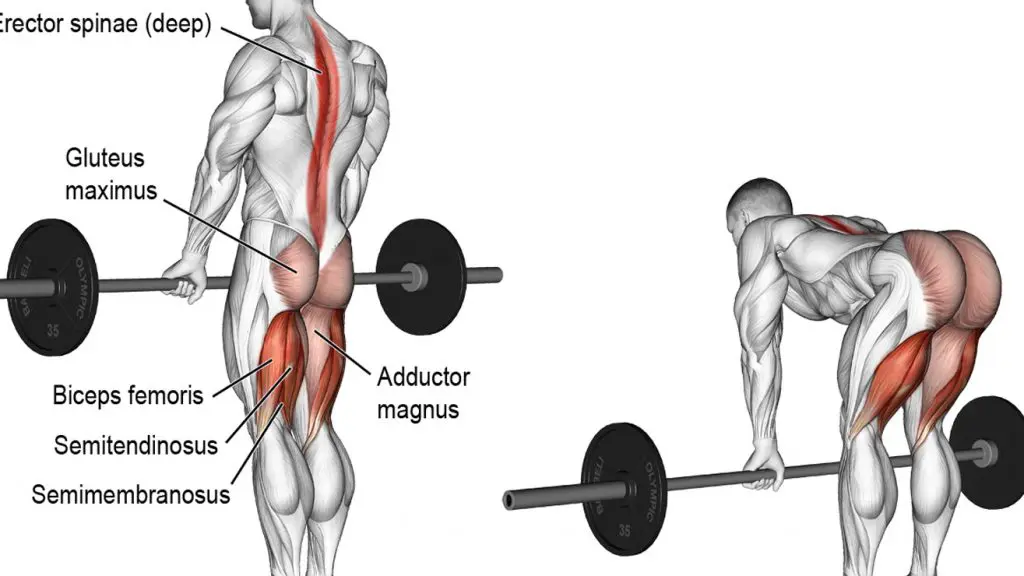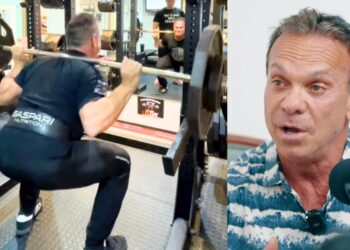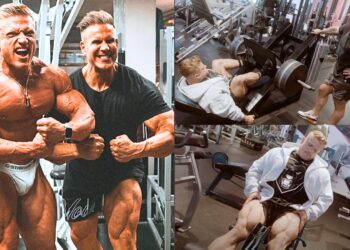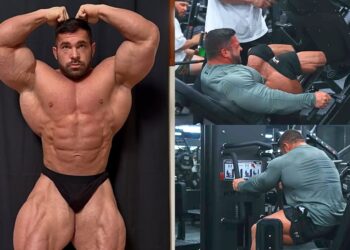The deadlift is an essential exercise for anyone who lifts weights. It’s a compound exercise which means it works lots of muscles at the same time. As well as being an excellent muscle builder and strength developer, deadlifts are one of the three exercises contested in the sport of powerlifting. It’s also a big part of strongman competitions. And, for a firmer, stronger butt, deadlifts are hard to beat.
Deadlifts involve almost every muscle in your body, from your calves to your upper back. They are also a useful core exercise. From bottom to top, the primary muscles worked during deadlifts are:
- Gastrocnemius and soleus – calf muscles
- Hamstrings – rear of the thigh
- Quadriceps – front of the thigh
- Gluteus maximus – bottom muscles
- Erector Spinae – muscles on either side of your spine
- Core muscles – deep muscles surrounding your internal organs
- Rhomboids and trapezius – muscles of the upper back
- Latissimus dorsi – side upper back muscles
- Deltoids – muscles of the shoulder
- Biceps and triceps – front and back of the upper arm
- Forearm flexors – gripping muscles
The deadlift is a relatively simple exercise that involves bending down and picking a weight off the floor, using your legs and back to do most of the work. Unfortunately, because deadlifts also allow you to lift heavy weights, doing them incorrectly can lead to injury, even in trained powerlifters.
Here are five of the most common deadlift mistakes you need to stop making. Any of these mistakes could lead to serious injury. Fix these mistakes, and you’ll not only reduce your injury risk; you’ll also be able to lift more weight, and that means better results!
1- Standing too far away from the bar
To deadlift safely and effectively, the barbell should be as close to your shins as possible. If the bar is too far in front of you, the weight will pull you forward onto your toes.
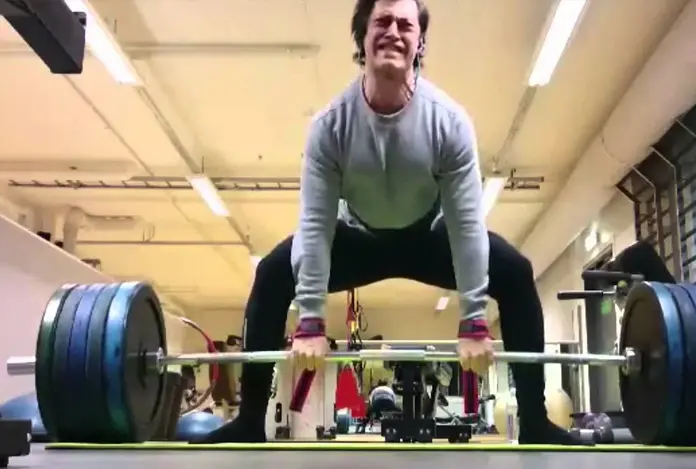
This does several things:
Level Up Your Fitness: Join our 💪 strong community in Fitness Volt Newsletter. Get daily inspiration, expert-backed workouts, nutrition tips, the latest in strength sports, and the support you need to reach your goals. Subscribe for free!
- Increases the distance the weight has to travel
- Puts more stress on your lower back
- Stops you from using your hamstrings and glutes as powerfully
- Reduces the amount of weight you can safely lift
You can get away with standing too far away when deadlifting lightweights. But, when the load starts to get heavy, things will go wrong fast. Make sure that when you step up to deadlift, your feet are under the bar. There is no need to touch the barbell with your shins, but they should be very close.
2- Don’t turn the deadlift into a squat
A lot of people think that deadlifts are just squats with the weight held in your hands. This is not true. Squats are a knee-dominant leg exercise. In other words, the quads do most of the work. In contrast, deadlifts are a hip-dominant exercise. Squats and deadlifts target different muscles.
Squatting the weight up means that you won’t be able to lift as much weight and your posterior chain (the muscles on the back of your body) won’t get such a good work out.
To avoid squatting the weight up when deadlifting, make sure that you set up for each rep with your hips higher than your knees. Also, focus on pushing your hips back and putting your weight on your heels. This will help increase posterior chain muscle involvement; you’ll really feel your hamstrings and glutes doing more work.
3- Using a mixed grip all the time
A lot of deadlifters use a mixed grip. This involves holding the bar with one hand facing forward and the other hand facing backward. A mixed grip stops the bar rolling out of your fingers which allows you to lift more weight or do more reps before your grip fails.
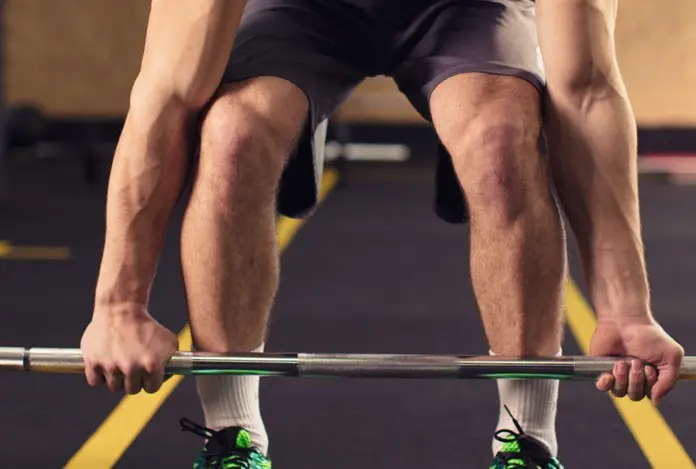
However, while a mixed grip is stronger than a regular overhand grip, it increases your risk of injury. Biceps tears are common, and studies suggest that using a mixed grip can lead to muscle imbalances.
While it’s okay to use a mixed grip for your heaviest sets, you should use a regular overhand grip as much as you can. This will help prevent muscle imbalances. If you do use a mixed grip, remember to switch hand position from set to set to avoid both short and long-term injuries.
4- Rounding your lower back
Rounding your lower back is the most dangerous thing you can do while deadlifting. A rounded lower back is very weak and increases the strain on the ligaments and discs in your spine.
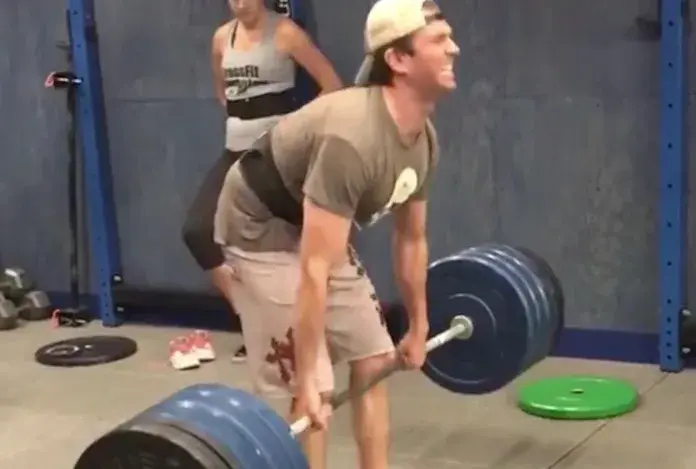
Ligaments and discs are avascular. That means they have a poor blood supply and are very slow to heal. Injured disks sometimes never recover on their own and may need surgery.
Common causes of lower back rounding during deadlifts include:
- Poor hamstring flexibility
- Weak core muscles
- Standing too far away from the bar
- Starting with your hips too high
When your lower back is straight or slightly arched, the weight is supported by your muscles instead of your ligaments and disks. While it is still possible to strain a muscle, this type of injury heals much faster and is less serious. Muscles have a good blood supply, and that means they repair quickly.
Avoid rounding your back by bracing your abs, keeping your chest up, and making sure your hips to do not rise faster than the weight you are lifting. You should be able to feel if your lower back is rounded or not. If you can’t, ask a friend to watch or video you from the side.
You should also avoid leaning backward and hyperextending your spine as you complete each rep. Do not thrust your hips forward. Instead, just stand up straight. Leaning back increases the stress on your lumbar or spine, and doesn’t add anything to the exercise.
5- Only doing barbell deadlifts
A lot of exercisers are fixated on doing deadlifts with a barbell. However, many of the problems outlined above can be avoided by making the switch to trap bar deadlifts.
A trap bar is a hexagonal frame that you stand inside. This places the weights on either side of your legs instead of in front of your feet.
In this position, the weights won’t pull you forward onto your toes. Studies suggest that trap bar deadlifts are just as effective as barbell deadlifts but put much less stress on your spine.
Wrap up
Deadlifts are one of the best exercises you can do. As well as being useful for increasing muscle mass and strength, they are also one of the best exercises for toning and building a great butt! However, they are not an exercise to be taken lightly – deadlifts are serious and must be done correctly to be safe and effective.
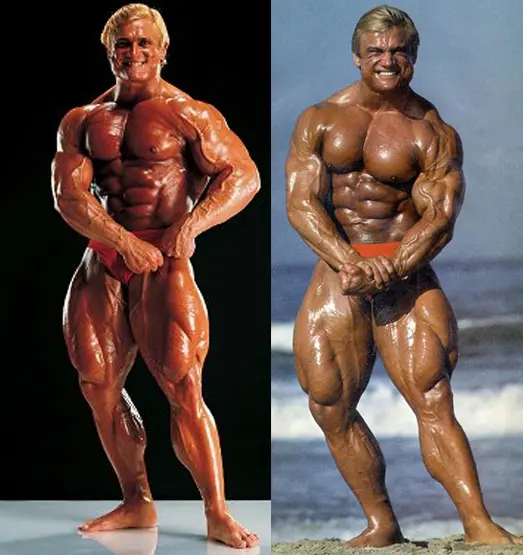
Deadlift mistakes aren’t only made by beginners, but advanced lifters too.; it’s very easy to get into bad habits that become difficult to break. Those habits and mistakes are often made worse when lifting heavyweights.
If you are guilty of any of these deadlift mistakes, stop making them now. Not only will you reduce your risk of injury, but your deadlift performance will also improve so that you get even more from this excellent exercise.
Read also: Why Some Lifter To Pass Out After Heavy Deadlifts
References:
1-Valleser, Christian Wisdom & Santos, Garizaldy. (2017). Effect of Deadlift Training on Core Strength in Previously Untrained Males. Journal of Physical Education Research. 4. 10-18.
2-Bengtsson V, Berglund L, Aasa U. Narrative Review of Injuries in Powerlifting with Special Reference to Their Association to The Squat, Bench Press and Deadlift. BMJ Open Sport Exerc Med. 2018;4(1):e000382. Published 2018 Jul 17. doi:10.1136/bmjsem-2018-000382
3-Beggs, Luke. (2019). Comparison of Muscle Activation and Kinematics During the Deadlift Using a Double‐Pronated and Overhand/Underhand Grip.
4-Lake J, Duncan F, Jackson M, Naworynsky D. Effect of a Hexagonal Barbell on the Mechanical Demand of Deadlift Performance. Sports (Basel). 2017;5(4):82. Published 2017 Oct 24. doi:10.3390/sports5040082


